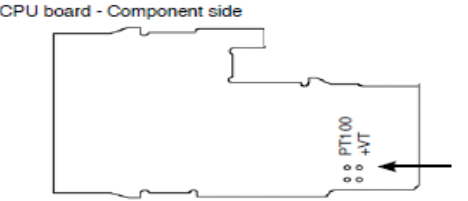This is usually an indication that the sensor signal is out of the configured range. Check that the input range is within tolerance:
- Press and hold the
 button until
button until  is displayed;
is displayed; - Press...
| Contact us: CPT: +27 21 762 8995 JHB: +27 11 966 9800 salessa@energisolutionsafrica.com |
This is usually an indication that the sensor signal is out of the configured range. Check that the input range is within tolerance:
 button until
button until  is displayed;
is displayed;This usually an indication of a) a faulty Pt100 or analogue signal or b) wrong sensor type or c) sensor signal is out of range or d) incorrect/damaged input connection.

This is usually an indication of a faulty thermocouple temperature sensor (open circuit or faulty cable).
 button until
button until  is displayed;
is displayed;Thermon polymer insulated heat tracers have an overjacket covering the braid. This overjacket is intended be a chemical corrosion barrier for the braid and also provide additional mechanical strength.
In general for Thermon BSX Self-Regulating Heatng Cables, the polyolefin...
A heating cable that includes a continuous series of short, independent heating circuits. Localized damage can result in only partial loss of heating. Watt-per-unit length output is relatively unchanged by variations in circuit length up to several hundred feet. Known as “cut-to-length”, parallel cables are easy to size because circuit lengths (within limits) do not have to be considered.
Any heating cable providing a watt output which increases as temperatures fall and decreases as temperatures rise. Self-regulating heating cables use a carbon matrix-heating element with variable resistance.
Self-regulating cables have a conductive polymer-heating element where the resistance exhibits a PTC characteristic, the resistance of the element increases with temperature. Conversely, the cable’s power output decreases with increasing temperature. As the temperature increases...
Parallel resistance heating cables that will reduce their power output as temperatures rise but do not have the high in-rush currents associated with self-regulating heating cables.
These cables are capable of delivering high watt per foot heat outputs.
Series resistance cables are single or multiple metal alloy conductors with a voltage applied at the ends.
The power output is a function of the voltage applied and the overall resistance based on type of metal alloy and circuit length. If the length changes the power output of the cable changes, so these heating cables are not considered “cut-to-length”.
Both self-regulation and power-limiting cables exhibit a PTC (positive temperature coefficient) resistance characteristic and subsequently power output decreases with increasing temperature.
As self-regulating heating cables increase in temperature they eventually reach a “shut-off” temperature.
Power-limiting cables provide higher power output at higher temperatures; however, as temperature increases power-limiting cables do reach a “shut-off” temperature.
Yes. Pipe support (non-insulated) and valves represent a region of much higher heat loss. This local higher heat loss must be made up with additional heating cable.

Thank you for your enquiry below. Our heat tracing specialist will be in contact with you soon...
Good day. Please quote on heating wires for a freezer room (-30 deg.C)
Heating wires to...